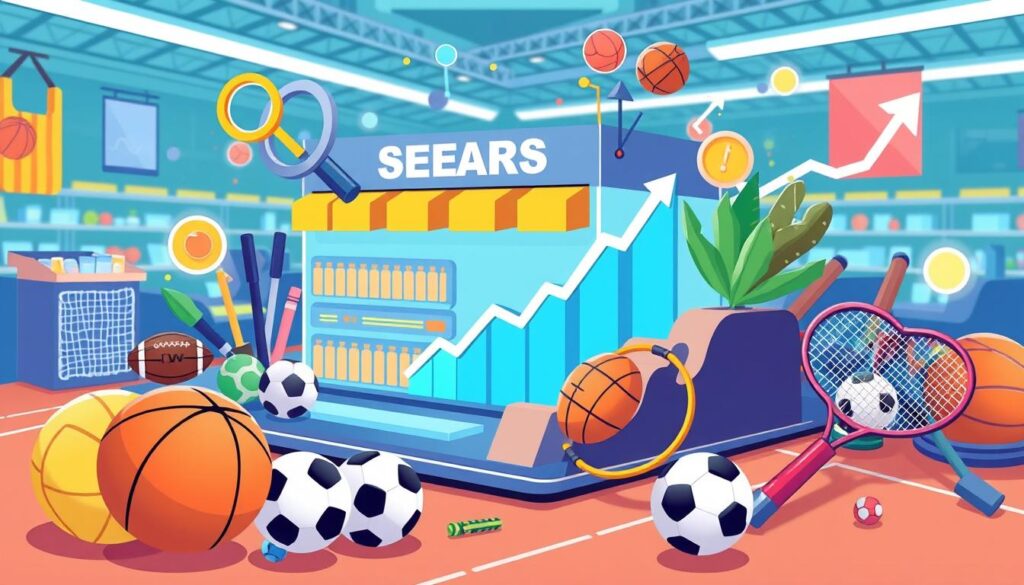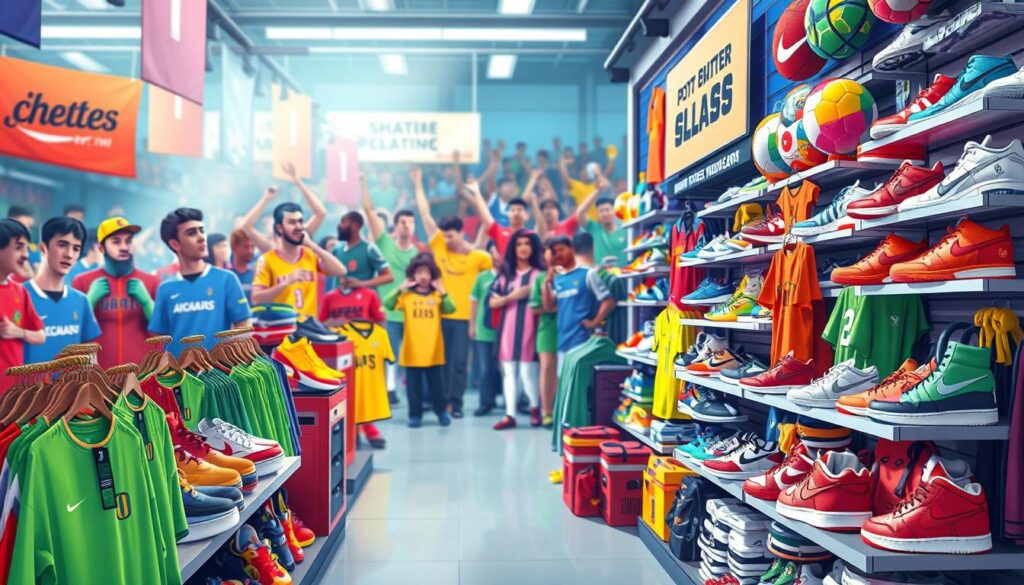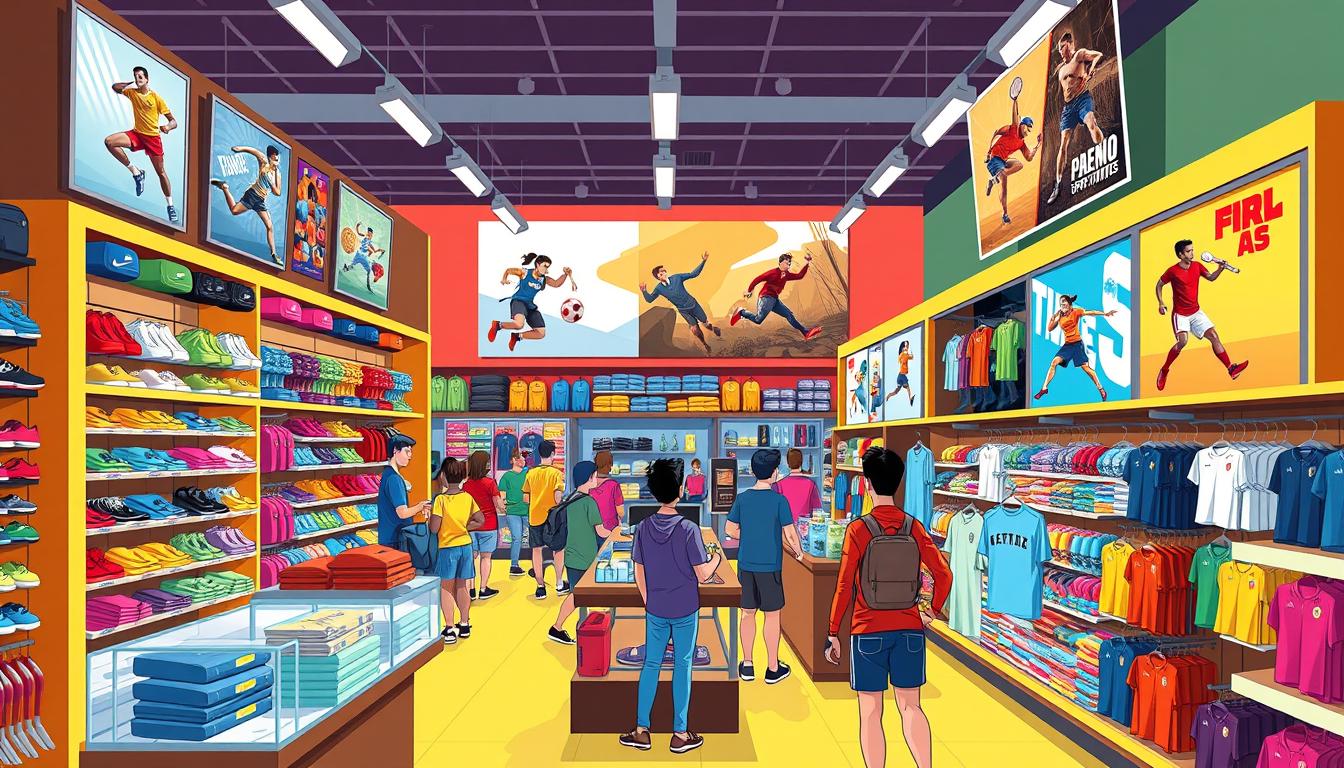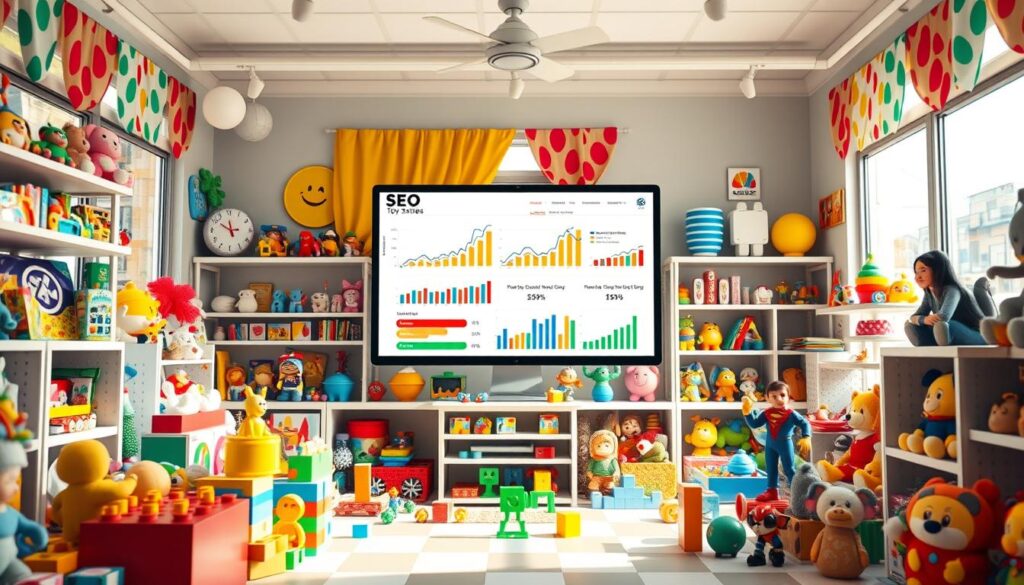Outdoor recreation spending is near $121 billion a year. Are your marketing plans really boosting sales, or just getting lost in the crowd? Effective marketing is key for sporting goods stores to not just survive but thrive. It’s about understanding the sports retail market to keep customers coming back and to make your brand stand out.
Today’s marketers need a mix of digital tactics, content, and data analysis. Companies like Dick’s Sporting Goods show how targeted ads can work through smart partnerships and personal marketing. Finding the right tools and strategies can put your brand ahead of the competition. It also helps tackle the ups and downs of sales throughout the year.
Key Takeaways
- Understanding seasonality is key to sustaining sales year-round.
- Brand recognition plays a significant role in consumer decisions, with 60% to 70% of buyers considering brand loyalty.
- Content marketing can differentiate your store and maintain customer engagement during off-seasons.
- Data-driven approaches help optimize marketing strategies and campaigns effectively.
- Utilizing historical sales trends enhances proactive marketing, especially in fluctuating markets.
Understanding the Importance of Marketing in Sporting Goods
The sporting goods sector is very competitive. Good marketing is key for retailers to stand out. With many brands competing, promoting sports equipment well is more important than ever.
It’s vital for retailers to keep up with changing trends and seasons. This helps them stay relevant in the market.
The Competitive Landscape of Sporting Goods Stores
Retail sales for sporting goods have grown a lot. The global sports technology market is expected to hit 55.14 billion USD by 2030. Retailers need to get better at reaching customers through social media like Facebook and Twitter.
Working with famous athletes can help brands reach more fans. Making sure websites and apps work well on mobile devices is also important. This ensures a smooth shopping experience for everyone.
Key Marketing Goals for Retailers
Setting clear marketing goals is crucial for sporting goods stores. Retailers should aim to:
- Improve brand visibility with interactive content.
- Use data to make their promotions better.
- Make shopping experiences better to keep customers loyal.
The growth rate of 20.8% from 2023 to 2030 shows the industry’s strong potential. Using engaging content, like what customers share and games, helps keep the community involved. This is key for staying relevant in a changing market.
For more on how to improve ecommerce, check out SEO practices that can boost sales. Understanding marketing’s role can greatly improve performance and connect with customers better.
Utilizing Digital Marketing Strategies
Sports stores need to use digital marketing to stay ahead. Having a strong online presence helps them connect with customers. This boosts brand visibility and drives sales through effective SEO.
Importance of an Online Presence
An online presence is key for sports stores. It boosts visibility in search engines and social media. Today’s shoppers often look online before buying, making digital marketing crucial.
Stores must appeal to their target audience with tailored content and promotions. This approach increases recognition and engagement.
SEO: The Backbone of Digital Marketing
SEO is vital for sports stores’ digital marketing. A well-optimized site attracts more visitors, leading to higher sales. Regular keyword updates and site improvements keep stores competitive.
Tools like Google Ads and Google Analytics offer insights. They help target ads effectively, bringing in quality traffic and boosting sales.
How Revenue Boomers Can Help
Revenue Boomers helps sports retailers improve their online presence. They offer customized SEO plans for better visibility. Their services include link building, product page optimization, and SEO audits.
Working with SEO experts gives sports stores a competitive edge. It helps them meet their marketing goals effectively.

| Digital Marketing Tools | Benefits | Key Features |
|---|---|---|
| Google Ads | Increased sales and visibility | Targeted advertising, audience insights |
| Google Analytics | User behavior analysis | Performance tracking and optimization |
| SEO Services | Organic traffic growth | Keyword research, site audits |
Content Marketing: Engaging Your Audience
In the fast world of sports merchandise, content marketing is key. It helps connect with people and build strong brand relationships. By creating content that fits, retailers can grow loyalty and sales. Various content types are used to grab the attention of sports fans.
Types of Content That Drive Engagement
There are many content types that work well in sports. Some of the best include:
- Blogs: Articles that share product info, event news, and training tips.
- Infographics: Visuals that make complex data easy to understand and share.
- Videos: Stories that show products in action, with athletes or influencers.
- Social Media Posts: Quick updates, behind-the-scenes, and fan engagement.
Benefits of Blogging for Your Store
Blogging is a big part of content marketing. It offers many benefits, such as:
- Establishing Authority: Stores can show they know their stuff in sports.
- SEO Benefits: Blog posts can help your site rank better in search results.
- Building Community: Stories can start conversations and make people feel included.
- Showcasing Products: Blogs can promote products in fun and interesting ways.
Utilizing Video Marketing
Video marketing is big because people love watching. It’s great for showing products in a way that grabs attention. Good video strategies include:
- Product Demonstrations: Real-time use shows products in action.
- Athlete Endorsements: Athletes can make your brand more believable and relatable.
- Live Events: Streaming events live can get fans excited and involved.

Using different content types in effective content marketing strategies can really engage people. It can boost online activity and sales. A mix of content keeps retailers ahead in a changing market.
Social Media: Connecting with Customers
Social media is a powerful tool for sports store advertising. It lets retailers connect with their audience in meaningful ways. By engaging on platforms like Instagram, Facebook, and Twitter, sporting goods brands can reach more people. This helps build stronger relationships with customers.
Best Platforms for Sporting Goods Marketing
Finding the right social media platforms is key for sports retail marketing. Some top platforms include:
- Instagram: Great for visual content, Instagram is perfect for showing off sports merchandise with eye-catching images and stories.
- Facebook: Offers many features, like event creation and groups, helping stores connect with local communities.
- Twitter: Best for real-time updates and engaging with sports fans.
Tips for Building an Engaging Social Media Presence
To build a strong social media presence, follow these tips:
- Consistency: Keep your branding consistent across all platforms to strengthen your brand identity.
- Interactive Content: Use quizzes, polls, and live videos to get customers involved and build a community.
- Responsive Engagement: Always respond to customer questions and comments to show you value their opinions.
- Leverage Influencers: Working with influencers can increase your visibility and credibility.
Engagement stats show that 86% of social media users follow a brand, and 57% are more likely to buy from one they follow. Investing in social media advertising can pay off big time. It helps build customer relationships and loyalty. For more marketing tips, check this link.
Email Marketing: Reaching Your Customers Directly
Email marketing is key for sports stores to connect with customers. It helps drive sales and build strong relationships. To succeed, focus on personalized content, good design, and the right timing.
Creating Effective Email Campaigns
A great email campaign has a few important parts:
- Compelling subject lines to grab attention and get opens.
- High-quality visuals that match the brand and products.
- Exclusive offers and discounts to encourage buying.
- A/B testing to see what works best with your audience.
- Tracking important metrics to keep improving.
Using a good sporting goods industry email list can make your campaigns better. Segmenting your list helps send messages that really speak to your customers, leading to more engagement.
Segmenting Your Audience for Better Engagement
Segmenting your audience is vital for sports store marketing. You can group people by:
- Demographic info like age and location.
- Purchase history to reach out to loyal customers.
- How they’ve interacted with your emails before.
This way, you can send content and deals that really matter to them. Regular emails keep customers coming back and build loyalty.
In-Store Marketing: Enhancing Customer Experience
In-store marketing is key to better customer experiences. It combines online and in-person interactions. Stores use merchandising to boost sales of sports goods. Attractive displays show off products and share the brand’s story.
Visual Merchandising Strategies
Visual merchandising plays a big role in what customers buy. Important strategies include:
- Strategically placed displays: Put popular items where they’re easy to see.
- Thematic signage: Use signs to tell the story of a product, connecting with shoppers.
- Interactive elements: Add hands-on features to let customers try products, making their visit better.
Using these visual strategies to promote sports merchandise can attract more people. It can also increase sales and foot traffic.
Hosting Events to Drive Foot Traffic
Hosting events in stores is another way to draw in customers. Events like product launches, sports activities, or meet-and-greets create lasting memories. They help build a community around the store, making customers come back.
Research shows that people value talking to sales staff and seeing products in person before buying. Effective in-store marketing boosts customer loyalty and satisfaction. By combining promotions, displays, and events, businesses can improve the shopping experience and sales of sports goods.
Measuring Success: Analytics and Adjustments
In the world of sports stores, success is more than just sales. Good marketing means knowing your numbers well. Key metrics like conversion rates and social media engagement help see how well your marketing works. With the sports analytics market set to hit $31 billion by 2034, using strong analytics tools is key.
Important Metrics to Track
Stores need to watch a few key numbers to do well. Sales per square foot and how fast inventory sells are important. They help with pricing and keeping the right stock. Customer data also helps understand what people want, making marketing better and keeping customers coming back.
Marketing analytics are crucial too. They show how different campaigns do, helping use resources wisely. This way, stores get the most from their marketing.
How to Use Data for Continuous Improvement
Using data helps sports stores get better all the time. By looking at sales, stores can see what sells best and when. They can also improve how employees work and the store layout, making shopping better.
The secret is to stay open to change. Marketing should always match what customers want, based on careful data checks. This keeps stores ahead and profitable in the long run.






